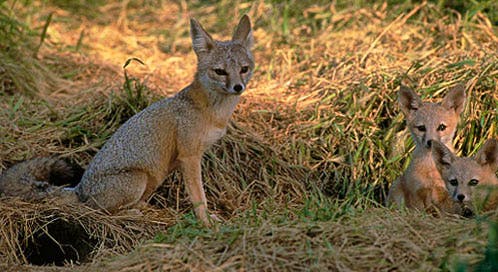A solar power plant in Panoche Valley could spell disaster for endangered species
Birds are migrating sooner. A severe drought plagues California. And wildlife such as the American pika are literally running out of habitat as temperatures increase in alpine areas. As we witness the impacts of climate change on our environment and wildlife, promoting clean energy projects is a top priority for the conservation community.
As critical as it is for California and our nation to transition to clean energy, it does not mean that clean energy projects should be approved no matter what the cost is to the environment. To that end, Defenders of Wildlife and other conservation partners have been working to promote policies and planning efforts at the local, state and national levels that employ “smart from the start” principles. This means that large-scale renewable energy projects move forward with careful planning that keeps wildlife in mind, and only in places where they will not cause undue harm to wildlife, habitat and other natural resources.
The Panoche Solar Farm is the antithesis of this approach. Local, state and national environmental organizations all vigorously oppose this ill-conceived project, and several months ago, Duke Energy withdrew as a major investor. Yet the project proponents, a company called PV2 Energy, continue to aggressively push regulators for the permits they would need to build there.

Why do we care so much about the Panoche Valley? It is absolutely vital habitat for three federally endangered species: the San Joaquin kit fox, the blunt-nosed leopard lizard and the giant kangaroo rat. All three of these species have lost so much of their habitat that there are only three core areas left for them to survive and thrive in. And the Panoche Valley is the only one that remains largely intact — both of the other two have been significantly degraded by development. The Panoche Valley is their last, best chance for survival; the only thing standing between them and potential extinction. There is simply no place left for this wildlife to go.
As if the survival of these three species wasn’t enough reason for its protection, the Panoche Valley is also a refuge for many other rare species. including: mountain plover, burrowing owl, golden eagle, San Joaquin pocket mouse, tiger salamander, fairy shrimp and many more, including a number of rare plants. This diversity of plants, animals and birds thrive in the Panoche Valley because it is one of the rare places where you can still find San Joaquin Valley native grasslands.
Since 2010, Defenders has argued vigorously to the project developer that we oppose any size project in this location. We have also suggested other locations for this project, in areas that would not impact wildlife so severely. With the latest changes, the project is now smaller in size than originally planned, and has proposed to buy a large amount of land to try to offset the project’s impacts. But no amount of mitigation can remedy the fact that development on the floor of the Panoche Valley would mean the end to any hope of recovering the San Joaquin kit fox, blunt nosed leopard lizard and giant kangaroo rat for the future.
Unfortunately, those of us working for responsible renewable energy development had a setback two weeks ago. The California Public Utilities Commission (CPUC) approved the power purchase agreement for the project, which is the contract in which the project developer promises to deliver power to the utility. While the Commissioners approved the Panoche project agreement, they also took great pains to clarify that while they were approving the agreement using their narrow criteria, which did not include any consideration of environmental impacts, they were troubled by the project’s location. PUC Commissioner Catherine Sandoval voted against the agreement and stated that she had “become increasingly troubled about the environmental issues.”
Defenders will keep working to ensure that the imperiled wildlife of Panoche Valley is protected. We will also continue our work to encourage other energy projects to get the most out of renewable energy sources without sacrificing wildlife, wild lands, and treasured landscapes. We have been working with the Department of the Interior and Bureau of Land Management to put policies and programs in place to do just that. By sticking with the right approach to renewable energy projects, and by rejecting destructive projects like the Panoche Solar Farm, we can quickly transition to clean, renewable energy while we protect our nation’s waters, wildlife and wild places.



